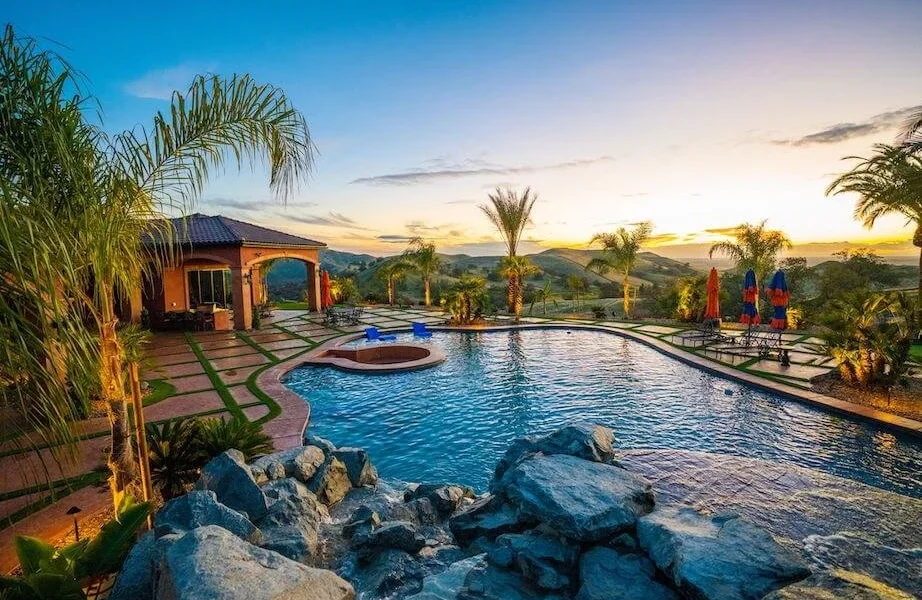The Ultimate Guide to Pool Construction: From Vision to Reality

A swimming pool is more than a backyard feature—it’s an investment in lifestyle, wellness, entertainment, and property value. Whether you’re dreaming of tranquil morning swims, weekend pool parties, or a serene water feature to elevate your landscape, pool construction is the critical first step in bringing that dream to life.
But building a pool isn’t just about digging a hole and filling it with water. It’s a complex, multi-phase process that requires planning, permits, precision, and the right team. This guide will walk you through everything you need to know—from the types of pools available to the stages of construction, costs, timelines, and expert tips for a smooth and successful experience.
Why Pool Construction Is a Valuable Investment
A well-built swimming pool offers more than just beauty—it creates a functional outdoor space where family and friends gather, relax, and create memories. Here are some compelling reasons homeowners invest in pool construction:
- Increases property value and curb appeal
- Encourages healthy lifestyle habits, such as swimming for exercise
- Enhances outdoor living with spaces for entertaining and relaxation
- Offers a personal retreat just steps from your back door
- Reduces the need for travel by bringing vacation vibes to your home
However, the long-term benefits depend heavily on the quality of planning, design, and execution.
Types of Pools to Consider
Before breaking ground, it’s important to choose the pool type that best fits your space, lifestyle, and budget. The most common options include:
1. Concrete (Gunite or Shotcrete) Pools
- Highly customizable in shape and size
- Extremely durable
- Ideal for complex designs, large installations, and long-term use
- Higher cost and longer build time
2. Fiberglass Pools
- Pre-manufactured shells available in many shapes and sizes
- Quick installation, often within days
- Low maintenance and smooth surface
- Limited customization
3. Vinyl Liner Pools
- Most affordable to install
- Flexible in shape and size
- Liner must be replaced every 7–10 years
- Smooth, non-abrasive surface
Each pool type has unique advantages and considerations, so it’s essential to evaluate them based on your goals, aesthetic preferences, and available space.
Pre-Construction Planning
Proper planning sets the stage for a successful pool build. Before any digging begins, several important steps are required:
1. Site Evaluation
A professional assesses soil type, drainage, slope, and existing utilities to determine the feasibility of construction and recommend suitable design options.
2. Design & Layout
Using 3D modeling or CAD software, your pool contractor designs a pool that matches your vision and fits seamlessly into your yard. Design factors include:
- Pool shape and depth
- Entry points (steps, ladders, tanning ledges)
- Water features
- Decking, coping, and surrounding landscaping
- Lighting, fencing, and safety features
3. Permitting
Local municipalities typically require permits for pool construction. A reputable builder will manage this process, ensuring compliance with zoning laws, property line regulations, and safety codes.
The Pool Construction Process: Step-by-Step
Though the details may vary depending on the type of pool, the general construction process follows these key phases:
1. Excavation
Heavy machinery is used to dig the pool shape based on your design. This step can take a few days, depending on soil conditions and access.
2. Framing and Steelwork (Concrete Pools)
Rebar is installed to form the skeleton of the pool. This steel grid reinforces the structure and shapes walls, floors, and steps.
3. Plumbing and Electrical Installation
Pipes for filtration, drainage, and water features are laid, along with conduits for lighting and control systems. Proper installation ensures long-term efficiency and safety.
4. Shell Installation
- Concrete Pools: Shotcrete or gunite is sprayed over the rebar, forming the hard shell.
- Fiberglass Pools: The prefabricated shell is lowered into place and leveled.
- Vinyl Pools: The structure is framed, and the vinyl liner is carefully fitted.
5. Curing and Backfilling
Concrete needs time to cure (harden) before additional work continues. Backfill is added around the structure to stabilize it.
6. Tile, Coping, and Decking
These finishing touches define the look of your pool. Materials may include natural stone, pavers, stamped concrete, or tile for a clean, cohesive aesthetic.
7. Interior Finish
For concrete pools, this is the application of plaster, pebble, quartz, or other surface finishes. This layer creates a waterproof barrier and defines the color and texture of the water.
8. Equipment Setup
Filtration systems, heaters, pumps, lighting, and automation features are installed and connected. These components are critical to pool performance and energy efficiency.
9. Water Fill and Testing
Once construction is complete, the pool is filled with water, and systems are tested to ensure everything is functioning as it should.
10. Final Inspection and Handover
A final inspection may be required by your local building authority. Your builder will then walk you through maintenance routines and equipment operation.
Timeline for Pool Construction
The duration of a pool project depends on many variables: weather, soil conditions, permit timelines, and the type of pool. Here’s a general estimate:
| Pool Type | Estimated Duration |
| Concrete | 8–12 weeks |
| Fiberglass | 3–6 weeks |
| Vinyl Liner | 4–8 weeks |
Delays are common in construction, so it’s best to build some flexibility into your project schedule—especially if you’re planning around a particular season or event.
Popular Add-Ons and Features
Today’s pools are designed with luxury and technology in mind. Consider these popular enhancements:
- Infinity edges or vanishing walls
- Swim-up bars or sun shelves
- LED lighting with remote control
- Waterfalls, fountains, and fire bowls
- Saltwater systems or mineral sanitation
- Smart pool automation (remote control systems)
- Built-in seating or tanning ledges
These features can greatly improve functionality, increase home value, and personalize your pool experience.
Choosing the Right Pool Builder
Your choice of contractor is the single most important factor in a successful pool build. Here’s what to look for:
- Experience and portfolio: Proven expertise in the type of pool you want
- Licensing and insurance: Always verify credentials
- Clear communication: Transparency on timelines, costs, and changes
- Client reviews and references: Look for consistent satisfaction
- Warranty and support: Post-build service matters
Ask for a detailed contract that outlines every phase of the job, from design and permits to completion and cleanup.
Maintaining Your Pool After Construction
Once your pool is built, regular maintenance ensures it stays clean, safe, and operational. Key maintenance tasks include:
- Skimming and vacuuming debris
- Balancing pH and chlorine levels
- Cleaning filters and checking pumps
- Winterizing (if needed in your climate)
- Scheduling annual inspections and servicing
Many pool owners opt for professional maintenance services to save time and avoid costly issues.
Conclusion
Pool Construction is a major project, but one that brings long-lasting benefits when done right. From initial design to the final splash, each step requires careful thought, expert execution, and clear communication. Whether you envision a tranquil oasis or a resort-style escape, the right planning and team can turn your outdoor space into a true destination.
If you’re ready to start your pool journey, explore your options, set your goals, and consult with a professional. The result will be an investment that enhances your property, your lifestyle, and your home’s overall value.

Source: The Ultimate Guide to Pool Construction: From Vision to Reality

